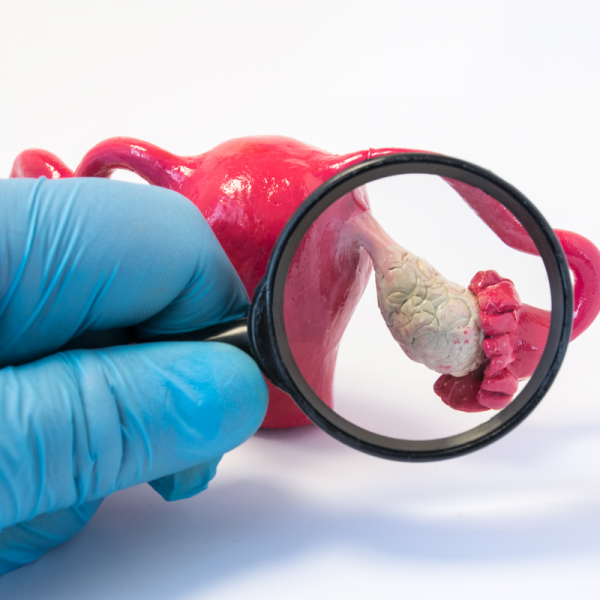
What is a corpus luteum cyst?
A corpus luteum cyst is a corpus luteum cyst. The corpus luteum consists of the remnants of the Graaf follicle, which is formed after ovulation and produces hormones that are extremely important for maintaining a pregnancy. If the egg is not fertilised, the corpus luteum perishes. However, a corpus luteum cyst can develop as a result of haemorrhage. The corpus luteum cyst is a functional form of the ovarian cyst, which can develop in many women of childbearing age.
How does a corpus luteum cyst develop?
A corpus luteum cyst occurs after ovulation due to hormones and in most cases regresses on its own. The egg travels down the fallopian tube to the uterus. The follicle (bladder-like structure in which the egg matures) remains in the ovary and matures into the corpus luteum, which produces hormones. The corpus luteum plays a crucial role in maintaining a pregnancy. However, during the period of growth of the corpus luteum, a corpus luteum cyst can also develop if there is haemorrhage.
Is a corpus luteum cyst dangerous?
It is possible for the corpus luteum cyst to grow to a size of up to 12 centimetres. Nevertheless, like 98 percent of all ovarian cysts, it is harmless and in most cases does not even require treatment.
What are the symptoms of a corpus luteum cyst?
A corpus luteum cyst can manifest itself as sudden pain on one side of the lower abdomen. But missed periods or spotting can also be a sign of a corpus luteum cyst. If you also experience unusual pain before or during your period, you should consult a gynaecologist.
How is a corpus luteum cyst treated?
A corpus luteum cyst can occur relatively frequently and requires regular check-ups by the gynaecologist treating the patient. This can already be done with simple ultrasound examinations. As a corpus luteum cyst usually disappears by itself, it does not need any further treatment.
If the cyst does not resolve on its own and causes discomfort, a laparoscopy can be ordered. During this examination, the gynaecologist can perform a minimally intensive examination of the corpus luteum cyst and remove it if necessary. If an operation is carried out, the cyst must be removed completely and the ovary spared. If, in rather rare cases, the cyst has become firmly ingrown, it may also be necessary to remove the affected ovary.
| Pathogen | Source | Members - Area |
|---|---|---|
| Corpus Luteum Cyst | EDTFL | As a NLS member you have direct access to these frequency lists |
